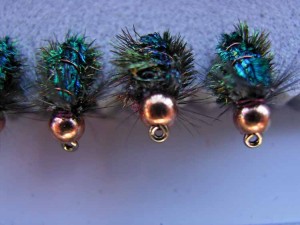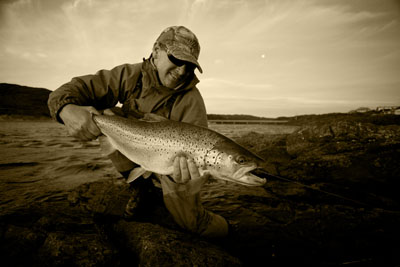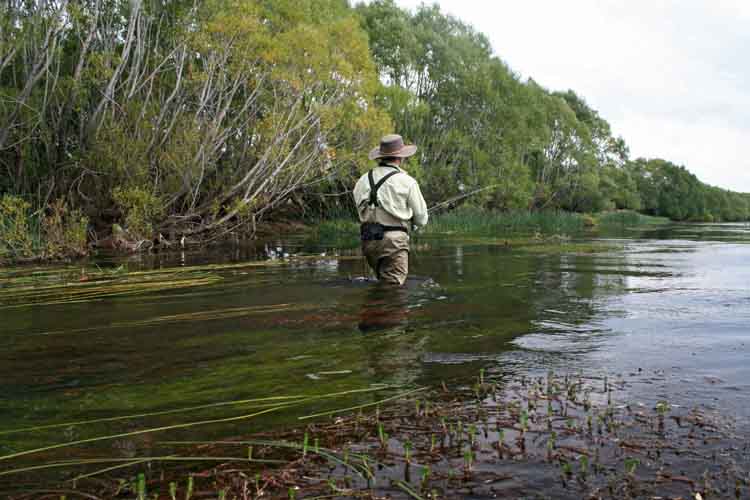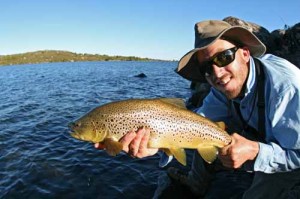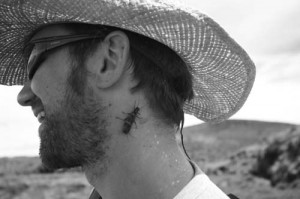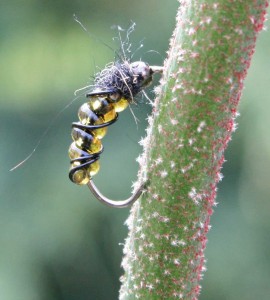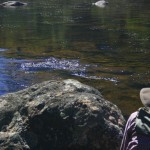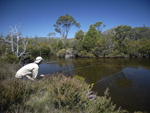To Live In a Place Where The Brown Trout Fall From the Sky
It's the end of the brown trout season in Tasmania, and apart from guiding on the rainbow waters during May and running winter fly tying courses, it's all about over for the season. That's why I'm trolling the net for entertainment in a vain attempt to attract my attention away from the looming winter and Cabin Fever. On my travels through the World Wide Web, I found this entry on the TroutUnderground which needed to be shared; happy reading: To...
The Source – Tasmania dvd
Arthur River sea-runner During late last year I was lucky enough to be invited to help Nick Reygeart of Gin-Clear Media with the filming of his up-coming film The Source - Tasmania. The request from Nick was clear: 'I want to capture a classic Tasmanian mayfly hatch on film'. As all of you know, I believe that one of the keys to successfully hitting the hatches is to fish to the season of the day -...
The giant stonefly and Max Christensen’s Bloody Mary
Bloody Mary
Guided fly fishing on Tasmania’s rivers: grasshopper time.
Prime spring-creek runs Yesterday marked the first full-bore grasshopper day of the season: I was lucky to be guiding on my favourite midlands stream with two skilled anglers, who managed 50 or so smashing takes on dry flies. Half of these trout were hooked and landed, ranging from half-a-pound to a bit over two-pounds. Deep, faster flowing runnels among spring-creek weedbeds were the hotspots, and the WMD Hopper proved to be the successful go-to fly. The...
Fly fishing the Tasmanian Western Lakes
Western Lakes torpedoe UPDATE - for more information on guided fly fishing in the Western Lakes, click here - RiverFly Wilderness Huts. During the last week of January each year, I spend a week in the Western Lakes region of Tasmania - this is a region of stark beauty, harsh weather, and remote World Heritage listed wilderness. If you're after a mental picture of the area, think of a stereotypical Scottish highland moor, interspersed with ancient pencil pines, marsupials,...
In Search of the Giant Stonefly
A giant stonefly hitches a ride The giant-stonefly (Eustheniidae) hatch is a mysterious Tasmanian event. Most anglers would have seen the adult insects running around from time-to-time, but few would have fished a serious hatch. These massive bugs are found right across a huge range of Tasmania's clear, cool waters, including tributaries of the St Patricks and North Esk rivers, the Meander, Mersey, Liffey and Leven rivers, Arthurs and Great lake, and among the Western Lakes....
Caddis grubs
Here is a new 'go-to' pattern for the freestone rivers of Tasmania. While I have a preference for fishing the dry-fly, this isn't always the best approach. This is when I opt to fish a nymph in tandem with a larger, bouyant dry fly, or upstream nymph with the single fly. A nymph that has proved deadly this season has been our Fastwater Caddis pattern. Originally tied for the fastwaters of Tasmania's north-east (North Esk, St Patricks rivers), this fly has historically produced...
The Mersey River
Mersey River - The Walls to the Cliffs Anyone with a copy of the Spring edition of FlyLife magazine will see an article I wrote, based on a year of exploration on the Mersey River, in northern Tasmania. The article itself was a labour of love, enabling me to write about my favourite river. Some people might ask, why would you promote your favourite river - wouldn't you rather keep it to yourself? For me, writing about favourite places is...
‘Artificial’ by Greg French – An interview on Greg’s newly released book
Those who have read my own book (In Season Tasmania) would know that Greg, apart from contributing the foreword, acted as a mentor during the writing stages of the production. His experiences with the pen (or perhaps keyboard would be more appropriate) span well over a decade, and have included a collection of Tasmanian fishing guides culminating in ‘Tasmanian Trout Waters’, of which Tasmanian anglers refer to as The Bible. Following from these publications, Greg wrote his first collection of...
Secret Spring Creeks part 3 – Seepage Springs
The ‘seepage springs’ as I call them are the spring creeks of the Western Lakes. Flowing underground from feeder lakes, these springs are the most common spring creek types found on Tasmania's Central Plateau. My best guess is that they are formed when dolerite bedrock fractures, creating a subterranean riverbed for lake-bound waters to escape into. Somewhere along their travels, these waters re-emerge among the scoparia and pineapple grasses, where they hold the odd trout, who are in fact translocated remnants...
Fly fishing photo – spring creek gold
This is what all the fuss is about, an awesome spring creek resident (and yes, those colours are real). Coming soon, part three of the spring creek series will cover what I call the seepage springs; the springs that carve their way through the bogs and moors of the Western Lakes. The trout are large and the creeks are skinny.
Secret Spring Creeks II – Limestoners
Limestone…just the word puts a smile on the dial, but then that’s nothing new. Look at the ole’ boys of fly fishing, and the streams of their stories─chalkstreams such as the Test and Itchen. Yes, limestone streams have a timeless appeal, and abundant hatches, clear flows and fat trout no doubt perpetuate their timeless appeal. Tasmania has a small number of excellent limestone spring creeks, often appearing in the middle of paddocks, only to disappear down the gullet of a sinkhole...
Secret Tasmanian Spring Creeks P1 – Granite
Question: Ever wondered how many springs make up a small stream? At my last exploration, the South Georges River starts with 14 rainforest-born springs splurging out of the hillside, eventually collecting into one lovely sandy stream. Lets face it, everyone loves a spring creek. The gin-clear waters, lower temperature variations and abundant hatches create dry fly fishing hotspots, but it is because of these reasons that their locations are often closely guarded secrets. To the east of Launceston sits the...

